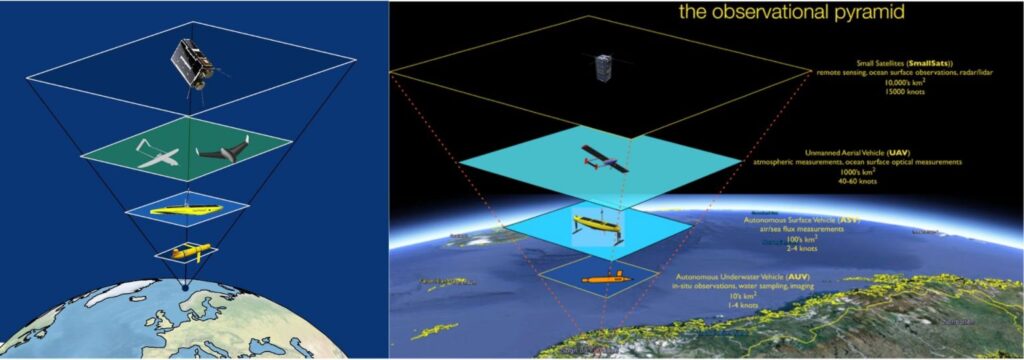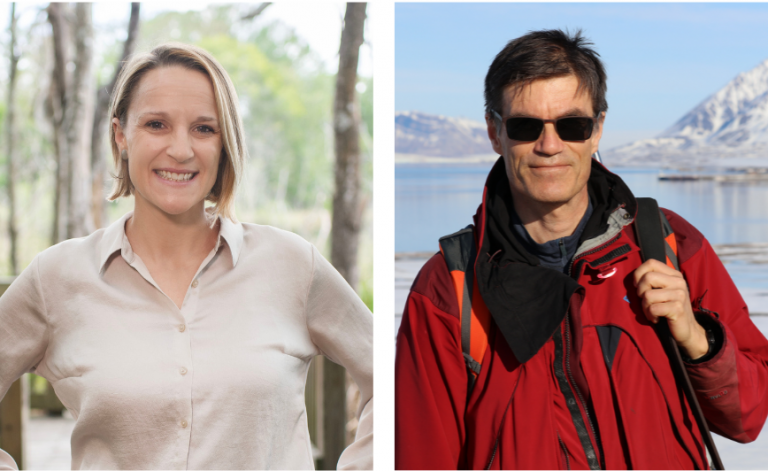In addition to world-class ocean and coastal research and engineering expertise, each institution offers distinct strengths.
The collaboration is co-led by Asgeir J Sørensen, Professor and leader of the Vista CAROS – Centre for Autonomous Robotics and Operations Subsea, NTNU and Christine Angelini, Director for the Center for Coastal Solutions in the Herbert Wertheim College of Engineering.
The agreement will facilitate an array of student and faculty exchange programs, joint research projects, publications, and the co-organization of symposia, workshops and conferences.
We caught up with Angelini and Sørensen to learn more…
1. What’s exciting about the NTNU-UF collaboration?
Dr. Sørensen: We have complementary research groups and researchers that really enjoy working together. We know we can have significant scientific and societal impact in ocean science and technology.
Dr. Angelini: We’re very excited about combining the world-class scientific and technological platforms of NTNU-UF to unlock new discoveries and solutions for challenges facing the world’s coasts. This collaboration offers the potential to observe and analyze processes from the microbial to the landscape-scale, between kelp forests, seagrass meadows and other benthic habitats and overlying waters to regional-scale dynamics of harmful algae blooms spanning thousands of square kilometers. It opens up whole new worlds of possibility for scientific discovery.

Norwegian SciTech News: Observing Arctic marine life – from the seabed to space
2. What are the unique strengths of each organization that might help unlock the potential for new discoveries?
Dr. Sørensen: NTNU researchers have built an observation pyramid made up of small-satellites, uncrewed autonomous aerial, sea surface and underwater vehicles. These marine robots enable tremendous growth in our data harvesting capacity, leading to an explosion of ocean data being generated and collected from various sources. This creates a bottleneck in that we lack the infrastructure and systems, including advanced numerical ocean models, to handle the processing and analysis of big ocean data, and to transfer this into knowledge for decision-making, ideally close to real-time. This is one of the challenges we strive to overcome through this collaboration.
Dr. Angelini: For the last decade or more, the team at NTNU has been innovating sensing platforms – from surface-crawling robots to satellites – to collect and produce observations of ocean and coastal waters with unprecedented resolution. Meanwhile, UF has been building its expertise in big data analytics, AI, supercomputing power and earth systems models. We see opportunities to make new discoveries through the collection, integration and analysis of large volumes of data to monitor the pulse of coastal and ocean waters and forecast future conditions with greater accuracy.
Norwegian SciTech News: A paradigm in conducting hazardous and innovative basic research
3. How will society benefit?
Dr. Sørensen: UF and NTNU share a passion for the marine world and understand the importance of the ocean for humanity. The Atlantic Ocean connects our countries, and what happens in the Gulf of Mexico and in coastal zones around Florida or in the Arctic will not stay there. We are facing both climate and ecosystem crises threatening biodiversity and humans. Simultaneously, both Florida and Norway both benefit tremendously from their ocean industries. We strive for knowledge-based management and value creation in a holistic and sustainable manner of the oceans. We have to pave the way for speeding up the steps from observations and information gathering to decision-making.
Dr. Angelini: This cross-Atlantic partnership will enhance our ability to monitor the health of our coastal and ocean systems, and better grasp how and why they are changing. We need to understand what’s happening so we can develop strategies to sustain our precious marine resources in the face of climate change and the ever-growing impacts of humanity on the health of our oceans and marine ecosystems.
Read also: NTNU’s first research satellite on the first mission in the Arctic

